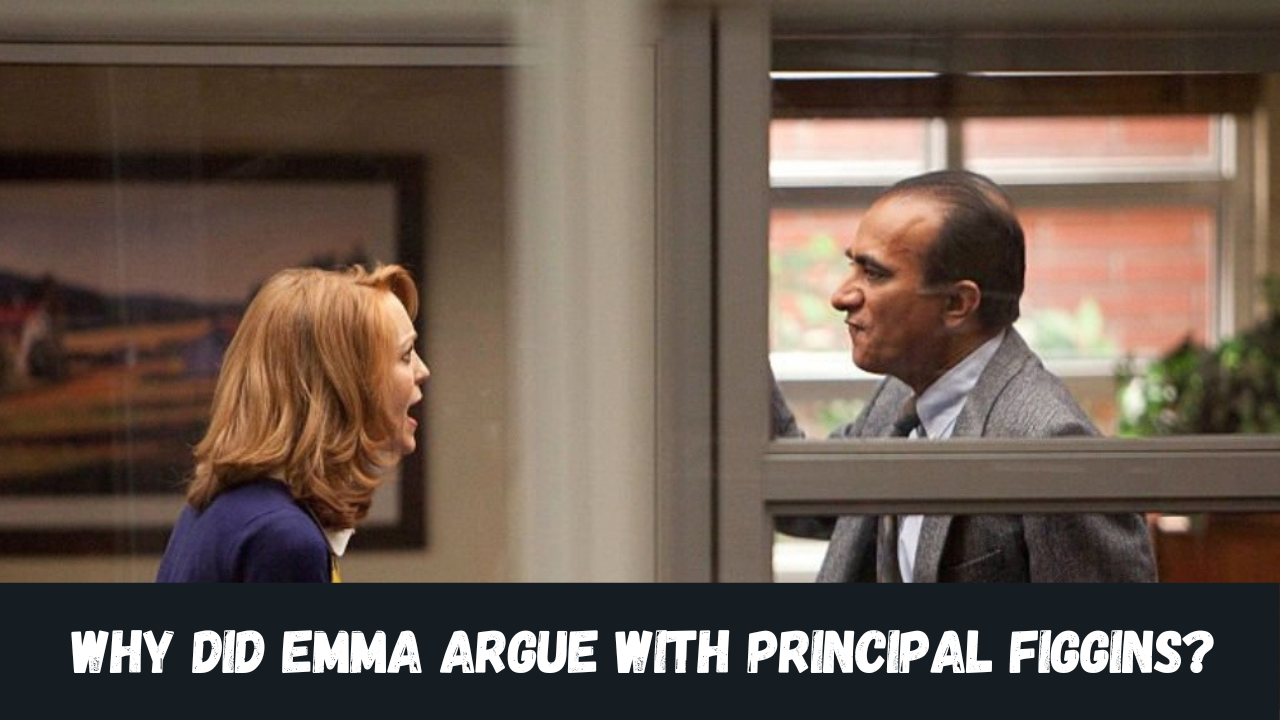Why did Emma argue with Principal Figgins?
- 1 The reasoning of the argument
- 2 Handling Strategies:
- 2.1 Is there any positive outcome of Emma’s argument with Figgins?
- 2.2 Examples of Emma and Principal Figgins’s argument on school policies?
- 3 Key take away
- 3.1 It is understanding different perspectives.
- 3.2 Importance of advocation
- 3.3 Effective communication
- 4 Final Thoughts
- 5 FAQS
To answer these questions, first, it’s essential to know these central characters, who they are, their perspective, and why they were involved in an argument. We will learn the argument’s reasoning, solution and handling strategies through their interaction where Emma argues with Principal Figgins. You need to take more of your time to know who they are.
Emma was a compassionate counsellor of the school known for her characteristics of determination, strong ethics, caring nature, kind conduct, dedication and love toward the students. She was advocating for the student’s arts and welfare. However, Principal Figgins was more interested in considering the school’s budget and the institute’s reputation, which portrays him as a character with administrative authority in the conflict. The argument shows significant tension between students’ interests and the Principals’ decisions.
The reasoning of the argument
As we have discussed who was Emma and Principal Figgins and what was their role in the argument, now moving forward, we are going to talk about the subject of the opinion that revolves around the students, and the main problem was that the students should be involved in the decisions that are going to affect them in future or the decisions that are taken for them. However, Principal Figgins had a very contrasting view, and he emphasized the importance of the set rules and regulations for the maintenance of plain operations without the involvement of the students, considering the administrative authority in charge of everything.
Handling Strategies:
The primary purpose of their argument was to find another way around or a resolution that respected both these students’ opinions and the institutional laws. Emma firmly stood with students, their future and their power of expression regarding the issues and the decisions that are taken for them; she raised her voice with confidence and shreds of evidence. She questioned the prevailing rigid policy, asked for the need for betterment in the educational system, and promised to bring about applicable ideas to regulate changes in the system.
Her complete focus was on the improvement and independence of the students so they could live confidently and learn to be maturely decisive. Principle Figgins, at the start, supported the old leadership styles of giving authority to the administration and not to the students; however, towards the end of the argument that was resolved through dialogue with the help of affected communication, Principal Figgins decided to reconsider the policies and set new plans and regulations for the betterment of education system.
Is there any positive outcome of Emma’s argument with Figgins?

Emma had a student-centric approach, while Principal Figgins supported rules and the ideology of discipline in the students. Emma thought the school’s dress code was too strict for the students and wanted students to show their styles. Figgins supported following the law for better learning. Towards the end of the argument, they agreed to allow the students to help them decide. Later on, the Principal made a group of students, and Emma allowed them to suggest changes to the dress code to take part in making the rules.
Examples of Emma and Principal Figgins’s argument on school policies?

There were different perspectives regarding how the education system should work; they often needed to agree on multiple things in the school. Emma said the students should be allowed to dress according to themselves, but Figgins wanted them to follow the proper dress code. Principal Figins was strict about rules and regulations, and there were specific punishments for students’ behaviours; however, Emma was kind enough to understand students’ problems and was against negating student rights and freedom.
She always wanted students to have all the rights to speak and express their ideas. She favoured students’ freedom of expression, while the Principal was more into keeping the school sticking to rules, such as how to spend money or educational funds. Emma instead wanted to spend money on programs and events mainly for students to make them feel good. Principal Figgins was more concerned about the school’s money and was always considerate about budgeting. This argument helped us look into minor issues prevailing around us and should be balanced by focusing on the school requirements and what the students need.
Key take away
It is understanding different perspectives.
Understanding different perspectives and prioritizing the students’ needs in the educational system is the key takeaway that we have learned from the argument.
Importance of advocation

This conflict enlightens us that it is very significant to consider various viewpoints and ideologies, as acknowledging different perspectives leads to the resolution of mysteries.
Effective communication
This argument demonstrates the power of negotiation and depicts the marvels of effective communication for a solution to end a conflict. The argument reaching a mutual understanding is the key solution to all the conflicting ideas presented earlier.
Final Thoughts
This argument supported shaping the school’s environment to a healthier level by highlighting the complexities and suggesting strategies to balance the old perspectives and the progressive ideas, specifically regarding education systems. It taught me how to manage challenges and perceptions effectively, revolutionising the educational system.
FAQS
Was there any difference in perception?
There were different perspectives regarding how the education system should work; they often needed to agree on multiple things in the school.
What was the subject of the argument between Emma and Principal Figgins?
The subject of the argument revolves around the students, and the main problem is that the students should be involved in the decisions that will affect them in the future or the decisions that are made for them.
Did the argument lead to any positive changes?
Towards the end of the argument, they agreed to allow the students to help them decide. Later, the Principal made a group of students, and Emma allowed them to suggest changes to the dress code and make the rules.

















